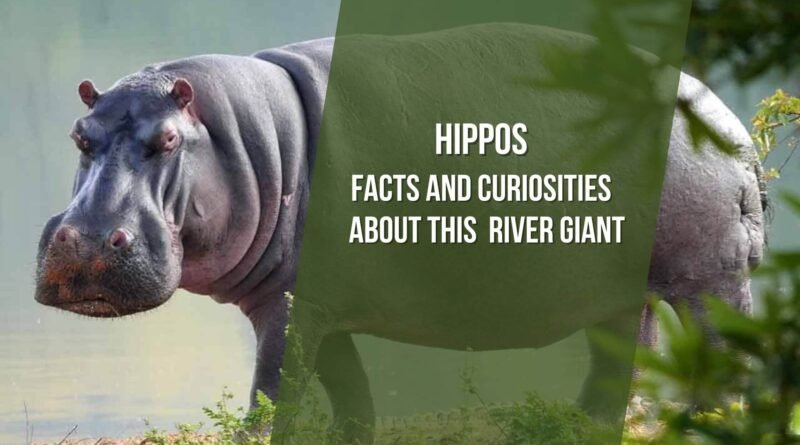Hippos: facts and curiosities about this river giant
They don’t look scary, they don’t look like bullies and they’re friendly enough to turn into animation characters (who doesn’t remember the cheerful and outgoing Gloria from Madagascar?). But in fact, these chubby animals are not so cute and can even attack humans. Let’s get to know a little more about them. Features, habitat, and curiosities about hippos are what we bring you in this article. We hope you enjoy the reading!
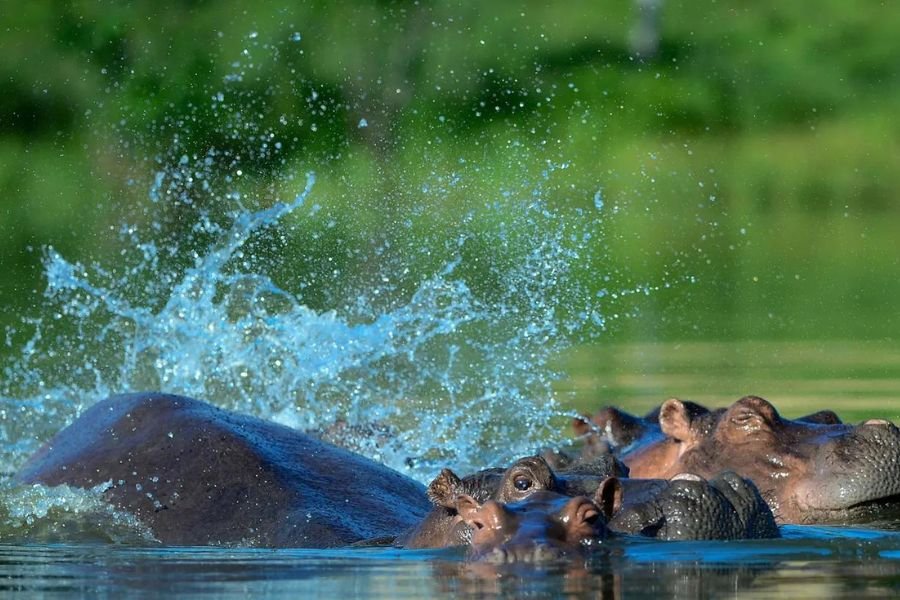
Origin and habitat
First of all, let’s clarify that there are two types of hippos: the common hippopotamus (the best known) and the pygmy hippopotamus (rarely seen and little studied). In this article, we will talk about the common hippopotamus. However, regarding their origin, we can say that both hippos are endemic to Africa and can also be found in Palestine (Middle East). In the old days, they were easily found in all African countries, including all along the Nile River, all the way to Egypt. However, unfortunately, they are now extinct in much of the south and north of the continent.
They are semiaquatic animals. They always live close to rivers in the savanna regions, in lakes and swamps, and spend most of their time in the water.
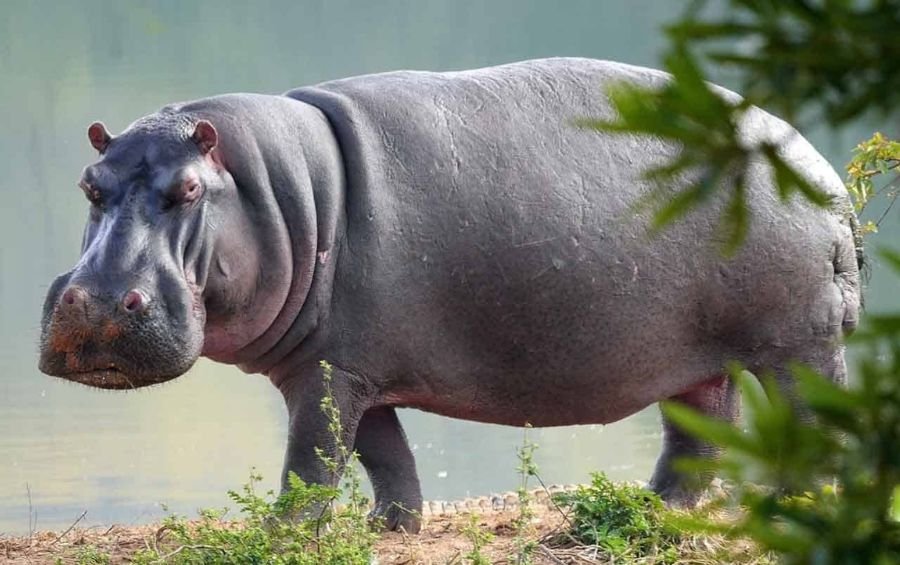
Features
The hippopotamus is considered the third largest mammal on the planet, second only to rhinos and elephants. The largest hippo ever recorded weighed over 4 tons. Impressive for a land animal, isn’t it?
The average weight of this animal is around 1.5 to 2.5 tons. Older male individuals can get heavier, reaching about 3.2 tons. This is because male hippos continue to grow throughout their lives, while females reach maturity at age 25. This is one of the most interesting curiosities about hippos, as there are rare cases of animals that never stop growing. The lifespan of this species is 40 to 50 years.
Its barrel-shaped body has almost no fur, except for thick hairs on its head and tail. Their skin, gray in color, is 2 inches thick. However, they are very sensitive to the sun, and just because of this, they produce an oily red liquid, which is often confused with blood. This liquid serves to protect the animal’s skin against the sun’s rays. It’s like natural sunscreen. So cool, right?!
Despite all the weight they sustain, their legs aren’t big. They are thick, of course, but short. Nevertheless, this incredible animal can run at a speed of 19 mph on dry land. As we said earlier, they are semiaquatic beings, they spend most of their time in the water and manage to move around very well in it.
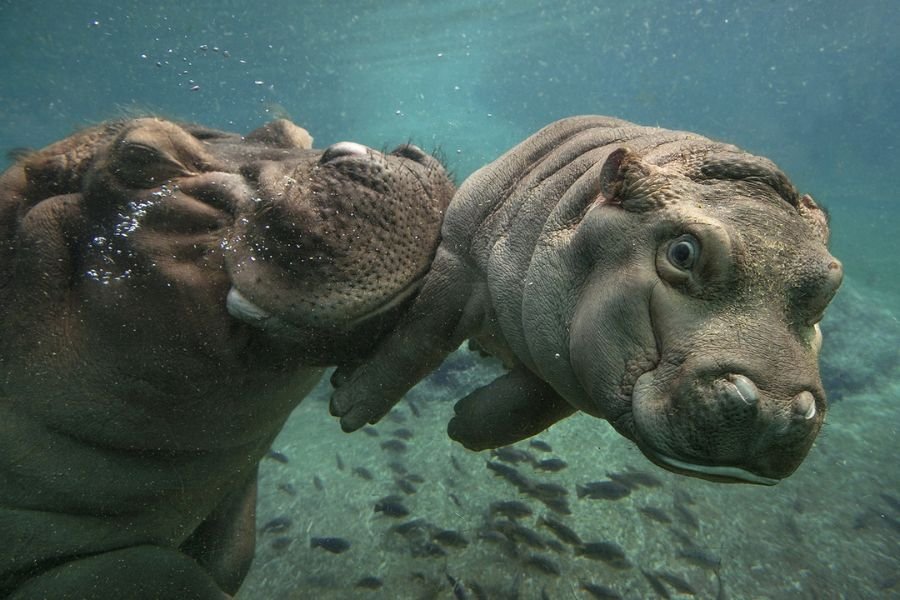
As they don’t go to very deep rivers, lakes, or ponds, they ‘walk’ on the bottom, using the ground as a support to push themselves. They are very agile and fast in this regard.
A curiosity about hippos in the water: they can stay underwater for up to 5 minutes without breathing. Amazing, isn’t it?
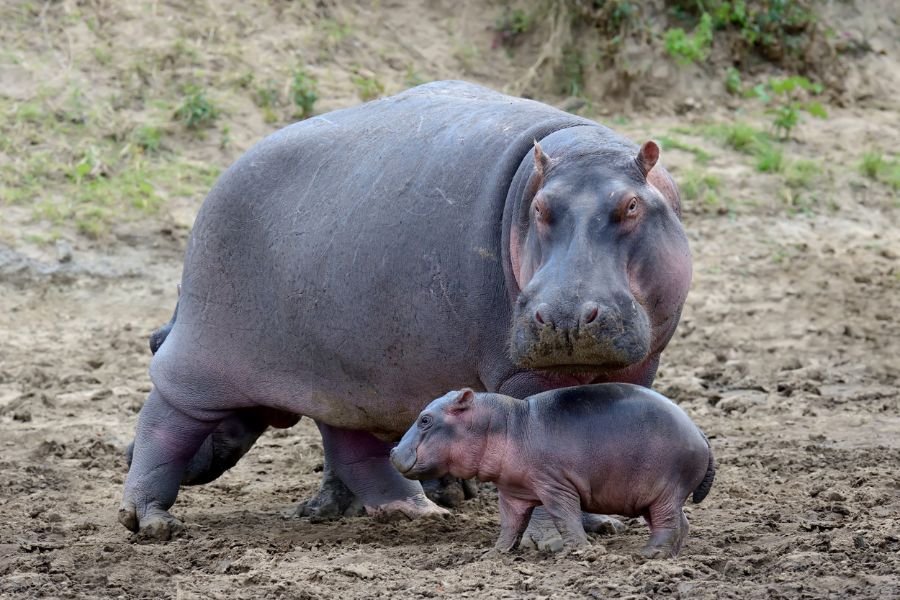
Reproduction and feeding
Between 7 and 9 years of age, the female of the common hippopotamus is already ready to reproduce. The males take a little longer to do so, reaching maturity between 9 and 11 years. They live in groups, called bloat, and are polygamous. The same male can fertilize several females, which as a rule, for the species, is a good thing. Each female gives birth to only one calf every two years.
The gestation period is 8 months and the mother hippo has her baby in the water, which is born with an average weight of 100 pounds. The calf is cared for by its mother until it is 3 years old, but it can stay with its mothers until much later. They are nursed during the first year of life, and look how interesting: nursing also occurs in the water!
After the nursing phase, hippos, both young and adult, are herbivores and feed on the undergrowth around the watering places where they live. However, they can walk miles for good food, and they usually do so at night. Feeding time is one of the few occasions when hippos come out of the water.
Behavior
These chubby ones are sedentary, territorial, and quarrelsome. Yes, Gloria’s sympathy, from Madagascar, is only in the animated movie, because in real life it’s not like that at all.
Hippos live in groups that can have up to 50 individuals and are led by a male. Despite living in groups (bloat or pod/herd), they are not considered social animals, and it is still unclear why they come together to live. When the leader feels that his position may be threatened by another male, they engage in violent and intense fights. In these clashes, one of them, or sometimes even both, is severely injured by bumps and bites with their long sharp canines.
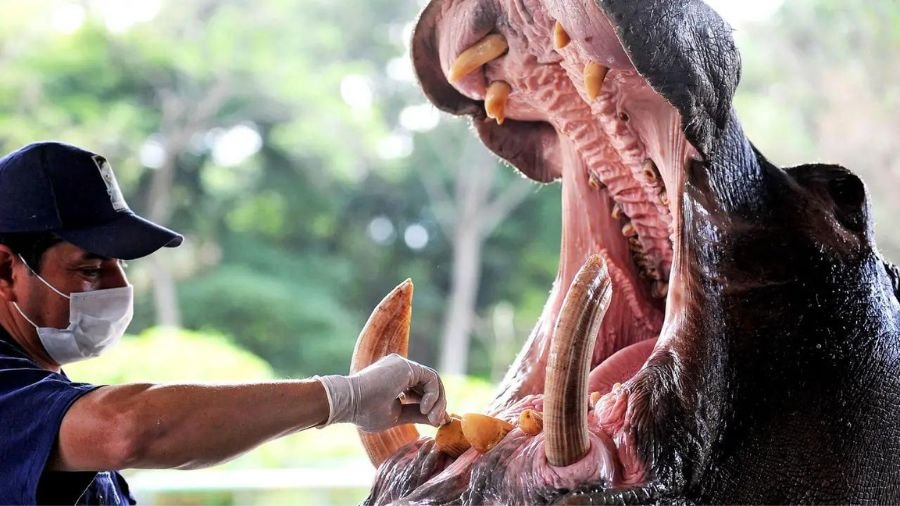
Now, one of the facts about hippos that might make you a little scared: a hippo bite has a force of 1800 PSI (8,100 Newtons). This strength, combined with the size of the canine teeth (which can reach 1 ft 4 in and are permanently sharp, as they sharpen themselves by rubbing each other) makes the hippopotamus bite one of the deadliest on the planet.
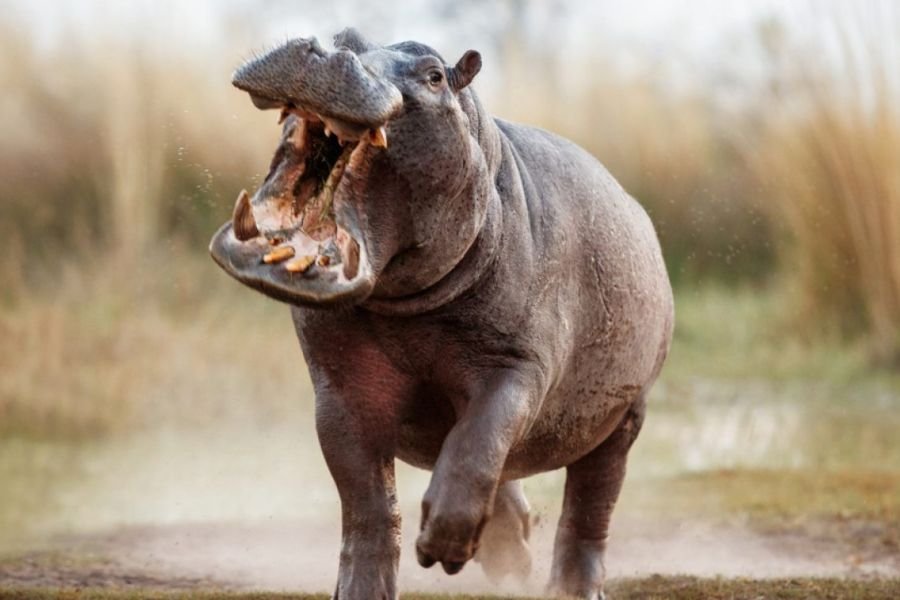
Attacks on humans
Hippos are calm animals most of the time, however, as we mentioned, they are very territorial animals in the water. It does not only attack another male of the same species to protect its territory but anyone who crosses its path and is considered a threat, including humans, on vessels or not.
This has become a major problem in the regions where they live. With the advancement of the population, cases in which people come across these animals have become frequent. The hippopotamus is one of the animals with the most recorded cases of attacks on humans, killing up to 500 people a year in Africa.
Other reasons that lead a hippo to become aggressive are:
- mothers protecting their calves;
- if they are hungry and in need of food;
- in the absence of water (remember that they are semiaquatic animals and are stressed when they cannot be in their preferred habitat).
An interesting facts about hippos is that they will never attack a human or other animal for food as they are herbivores. Its instinctive aggressiveness appears only in the cases mentioned above. Some experts believe that it was due to such aggressiveness that this species managed to survive for millions of years.
Conservation status
The International Union for Conservation of Nature (IUCN) Red List classifies common hippos as vulnerable. The latest official data on the hippopotamus population date from 2016 and indicate 115 to 130,000 individuals of the species living in regions of Africa. Before that, from the last record made in 1994 until 2016, there was a 30% drop in the population of the species.
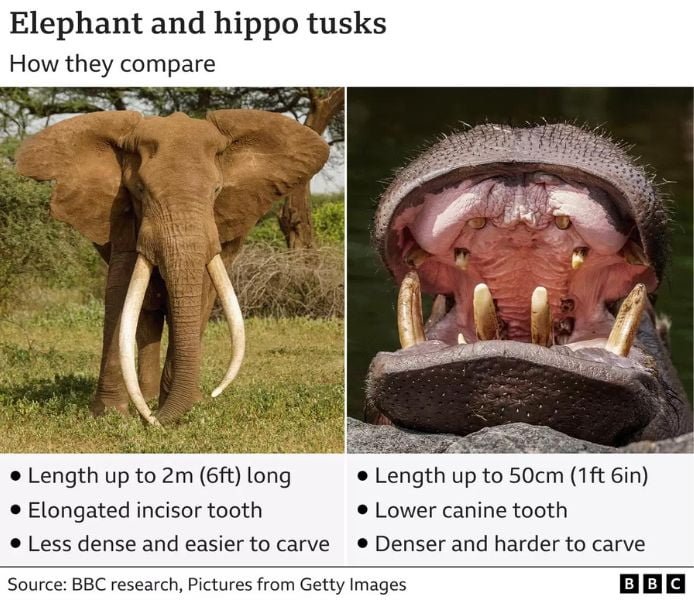
The main causes of its vulnerability are the loss of habitat due to degradation, deforestation, pollution, or the advance of the human population, as well as, mainly, poaching. Since prohibitions began on the sale of elephant tusks for use in ivory, man began to hunt and trade hippopotamus teeth. It is also made of ivory, although they are denser and more difficult to carve.
According to a BBC report, 770,000 kg of hippopotamus teeth were legally traded between 1975 and 2017 – the size of the illegal trade is unknown.
Facts about hippos
- Its scientific name is Hippopotamus amphibius, of Greek origin and means ‘river horse’;
- They can recognize voices;
- They are also able to identify friends from enemies through their feces;
- Due to their adaptation to living in water, they can stay submerged for long periods, keeping only their ears and nostrils out of the water;
- There were 4 species of hippos, however, two are now extinct: the Cyprus dwarf hippopotamus (Hippopotamus minor) and the Madagascar dwarf hippopotamus (Hippopotamus madagascariensis);
- If a hippopotamus is not strong enough to defeat the bloat’s alpha male, it can create its pod and territory;
- They don’t have sweat glands, so they stay in the water for so long and produce their sunscreen;
- Hippos prey on more people than any other land animal, even tigers and lions;
- Despite looking nothing like elegant dolphins, cetaceans are the closest relatives of hippos;
- When adults, they have no natural predators, however, when young, they are hunted by hyenas, lions, and crocodiles.
Conclusion
In this article, we were able to learn a little more about this giant mammal and some curiosities and facts about hippos that you might not know. Once again, we learned of yet another specimen of our fauna that is endangered.
We have seen that no matter the size or ferocity of the animal, human greed will always make the man more dangerous and deadly than any known species alive in nature.
If you liked what you read, leave your comment in the field below and keep following us.
Till next time! ♥

